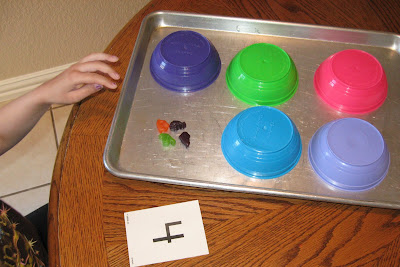 After reading Building a Foundation for Preschool Literacy by Carol Vukelich and James Christie, I've been thinking of ways to create what they call "literacy-enriched play settings". Simply put, these play settings provide materials for children to explore reading and writing while they play. While playing in a literacy-enriched play setting, children:
After reading Building a Foundation for Preschool Literacy by Carol Vukelich and James Christie, I've been thinking of ways to create what they call "literacy-enriched play settings". Simply put, these play settings provide materials for children to explore reading and writing while they play. While playing in a literacy-enriched play setting, children:- Learn why people read and write
- Practice the conventions of reading and writing
- See reading and writing as something they want to be able to do

To introduce the materials, I suggested to Julia that we set up a flower shop. While she was arranging some flowers I pretended to answer the phone and take an order from a customer. I asked the customer questions and wrote the order on a page in the notebook. Then Julia and I worked to fill the customer's order. Julia decided that I should pretend to be the customer and pick up the order. She rang up my order, swiped my card, and gave me a slip to sign my name.
 Here Lauren is writing down an order. She doesn't write any letters yet but her writing is a series of lines that look similar to letters. By the way, what can be cuter than a little bumblebee working in a flower shop?
Here Lauren is writing down an order. She doesn't write any letters yet but her writing is a series of lines that look similar to letters. By the way, what can be cuter than a little bumblebee working in a flower shop?- Learn why people read and write- to remember a customer's order, to make a sign, to make an advertisement, to sign a credit card slip
- Practice the conventions of reading and writing- write from left to right, use resources to help with spelling
- See reading and writing as something they want to be able to do- for over an hour!!
I am so excited to try some more literacy-enriched play! I'm thinking we can try a restaurant, a pet groomer, a bakery, a pizza shop...






























 After reading Butterfly Life Cycle by Jeff Bauer and From Caterpillar to Butterfly by Deborah Heiligman the kids put together these
After reading Butterfly Life Cycle by Jeff Bauer and From Caterpillar to Butterfly by Deborah Heiligman the kids put together these 





















